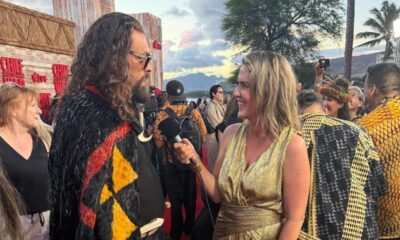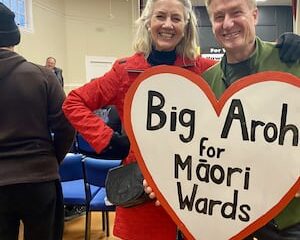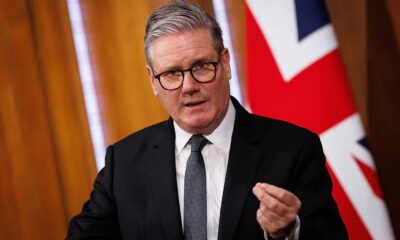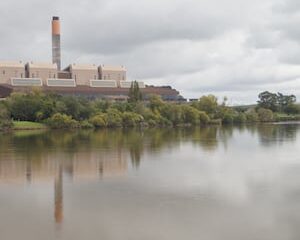Business
New Zealand to Implement Tourist Fees at Iconic Attractions
New Zealand is set to introduce fees for foreign tourists visiting some of its most iconic attractions. The government recently announced plans to implement charges at four renowned sites: Milford Sound, Aoraki Mount Cook, Cathedral Cove, and Tongariro Alpine Crossing. This initiative aims to generate additional revenue while ensuring the protection of these treasured locations.
The initiative is part of a broader strategy to enhance conservation efforts and manage high visitor volumes. New Zealand’s Prime Minister Christopher Luxon emphasized the need for such measures, stating, “Sites that are truly special to New Zealanders should be protected. We are giving the Department of Conservation (DoC) more support by introducing a charge for foreign visitors to access high-volume sites.” The government estimates that the new fees could bring in up to $62 million (NZD) annually.
According to Tama Potaka, the Conservation Minister, the introduction of fees is seen as a fair approach given that tourists have expressed surprise at being able to visit some of the world’s most beautiful locations without any charge. He highlighted that this move would not affect New Zealand citizens, who will continue to enjoy free access. “It’s our collective inheritance, and Kiwis shouldn’t have to pay to see it,” he stated.
Details on the Fee Structure
The exact fee amount for foreign visitors has not yet been finalized. However, initial estimates suggest charges ranging from $20 to $40 (NZD) per visit, depending on the site. A spokesperson for the Conservation Minister’s office clarified, “No final decisions have yet been made on the exact visitor fees. This is an initial estimate only.”
Further analysis and consultations with relevant stakeholders will be conducted to finalize the fee structure and ensure a smooth implementation. The earliest fees are expected to be introduced in the summer of 2027. The selected sites were chosen due to their international appeal, with foreign visitors making up approximately 80 percent of tourists at these locations.
Revenue Allocation and Visitor Experience
The projected revenue from these fees will be specifically allocated for conservation projects, including maintenance of tracks, huts, and toilets, as well as biodiversity protection. The Conservation Minister’s office indicated that the funds would address access and infrastructure issues, which have been significant at some sites, such as the Cathedral Cove, which was closed for nearly two years due to storm damage.
Tourism sector advisor David Simmons noted that dual-pricing systems, where foreign visitors pay higher fees than locals, are becoming increasingly common worldwide. He stated, “The logic is that New Zealanders have already contributed under broad taxation to run the DoC, while international visitors have not.”
The introduction of these fees is largely supported by the Tourism Industry Association, which stresses the importance of ensuring that charges are applied fairly and enhance the overall visitor experience. General Manager for Membership and Advocacy, Greg Thomas, stated, “Tourism Industry Aotearoa is generally supportive of DoC having the authority to introduce access charges at high-use tourism locations, but only where it’s fair and benefits the visitor experience.”
As the government moves forward with this plan, it will explore various methods for collecting fees, including online booking systems and ticket booths. The approach will draw on practices from international examples, such as Banff National Park in Canada and Yellowstone National Park in the United States, which already have established fee structures.
The introduction of tourist fees in New Zealand reflects a growing trend among countries responding to the pressures of overtourism and the need for sustainable management of natural resources. As the nation prepares for these changes, the focus remains on balancing the needs of tourists with the imperative of preserving its unique landscapes for future generations.
-

 World4 months ago
World4 months agoTest Your Knowledge: Take the Herald’s Afternoon Quiz Today
-

 Sports4 months ago
Sports4 months agoPM Faces Backlash from Fans During Netball Trophy Ceremony
-

 Lifestyle4 months ago
Lifestyle4 months agoDunedin Designers Win Top Award at Hokonui Fashion Event
-

 Entertainment4 months ago
Entertainment4 months agoExperience the Excitement of ‘Chief of War’ in Oʻahu
-

 Sports4 months ago
Sports4 months agoLiam Lawson Launches New Era for Racing Bulls with Strong Start
-

 World5 months ago
World5 months agoCoalition Forms to Preserve Māori Wards in Hawke’s Bay
-

 Lifestyle4 months ago
Lifestyle4 months agoDisney Fan Reveals Dress Code Tips for Park Visitors
-

 Health4 months ago
Health4 months agoWalking Faster Offers Major Health Benefits for Older Adults
-

 Politics4 months ago
Politics4 months agoScots Rally with Humor and Music to Protest Trump’s Visit
-

 Top Stories5 months ago
Top Stories5 months agoUK and India Finalize Trade Deal to Boost Economic Ties
-

 Health2 months ago
Health2 months agoRadio Host Jay-Jay Feeney’s Partner Secures Visa to Stay in NZ
-

 World5 months ago
World5 months agoHuntly Begins Water Pipe Flushing to Resolve Brown Water Issue









